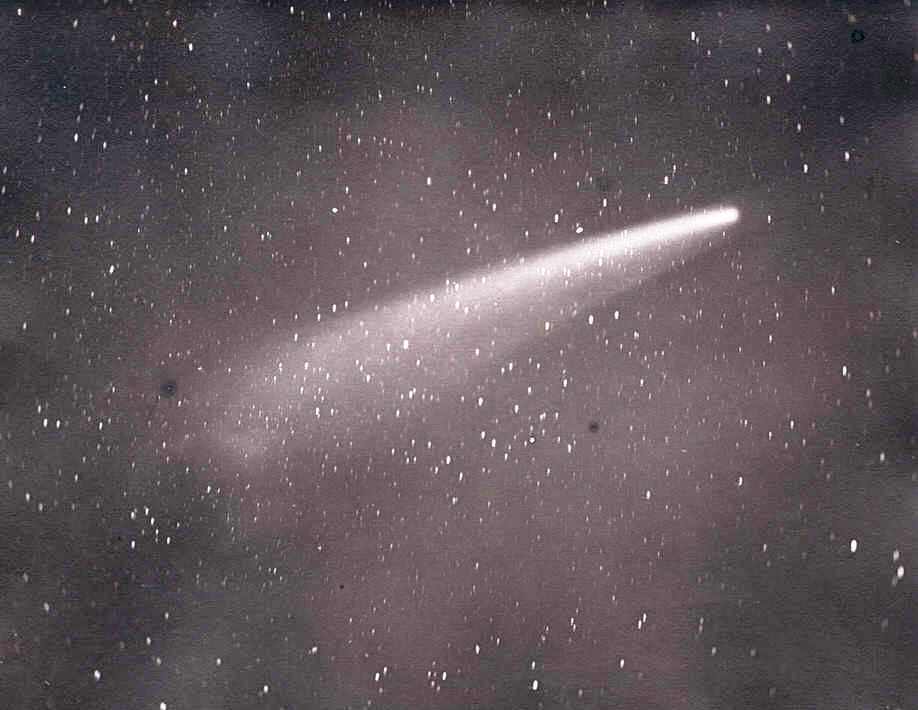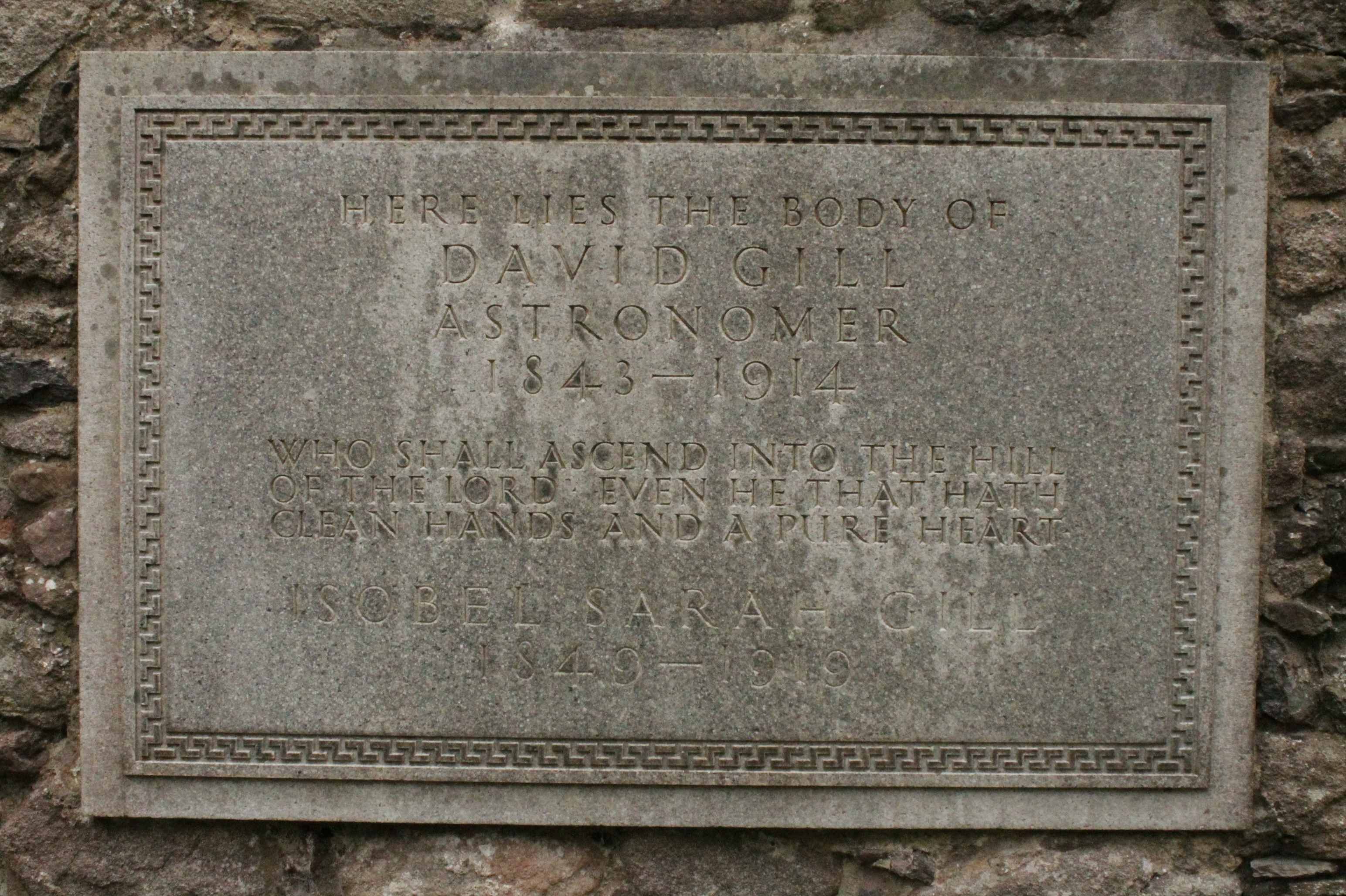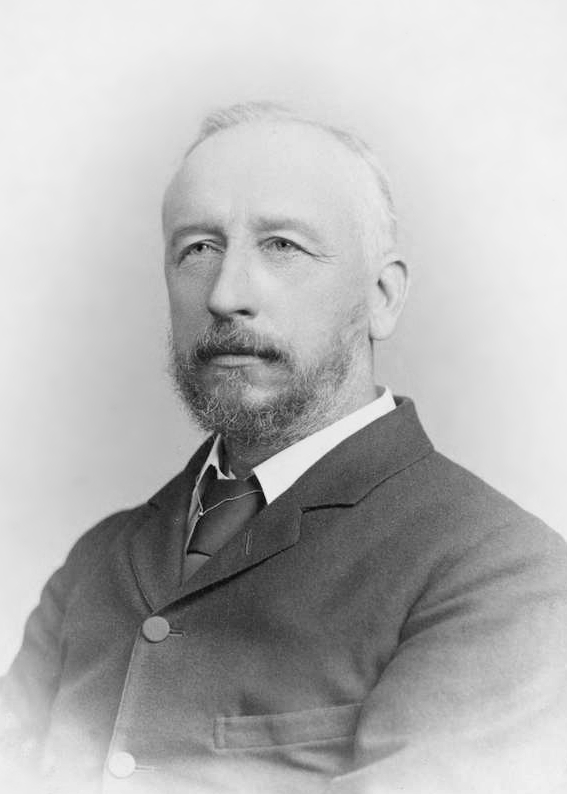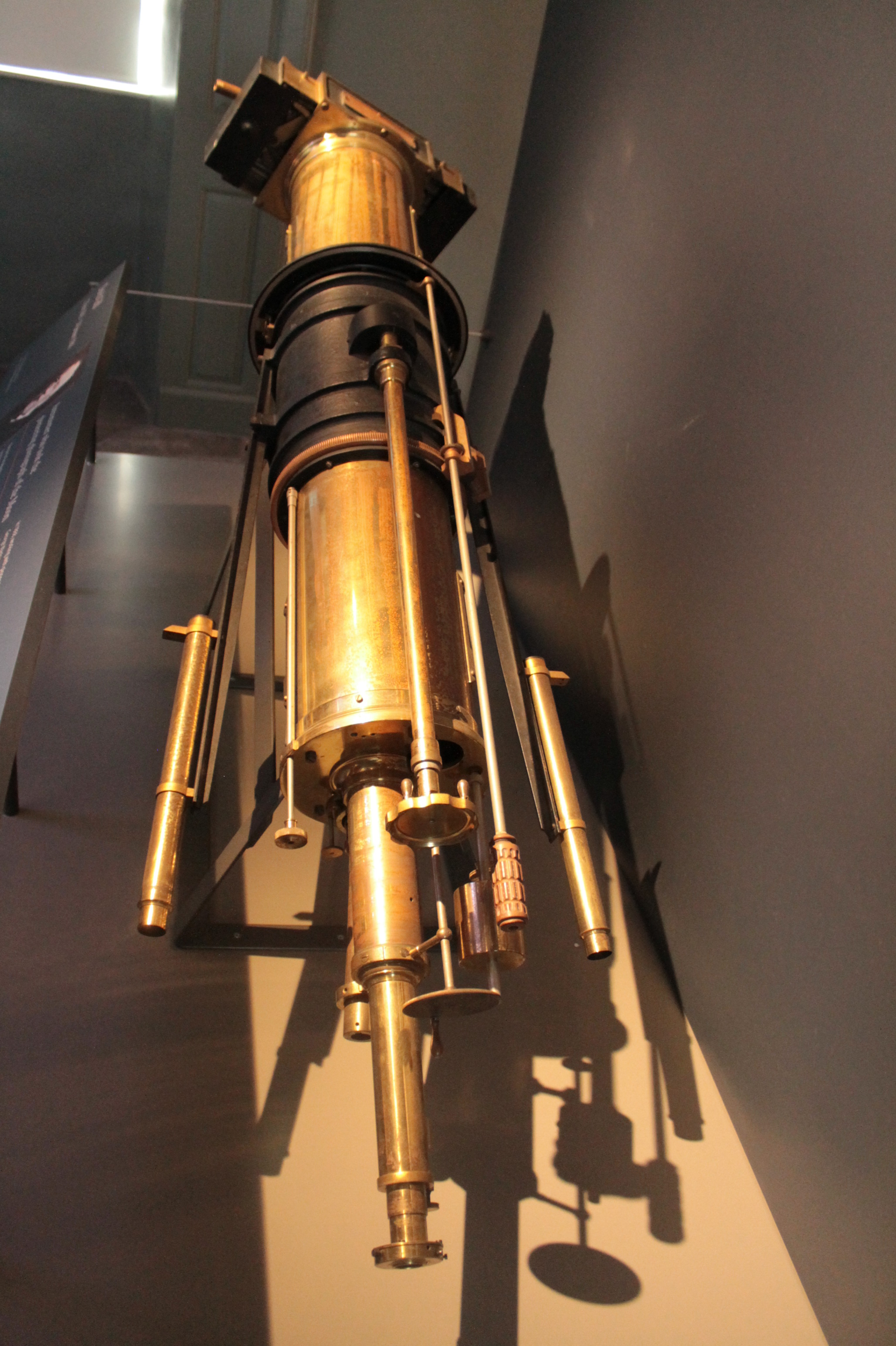1. Early Life and Background
Sir David Gill's early life laid the foundation for his illustrious career in astronomy, transitioning from a family business to dedicated scientific pursuits.
1.1. Early Life and Education
David Gill was born on 12 June 1843, at 48 Skene Terrace in Aberdeen, Scotland. His father, also named David Gill, was a watchmaker, and his mother was Margaret Mitchell. Gill received his initial education at Bellevue Academy in Aberdeen before attending Dollar Academy. He then spent two years studying at Aberdeen University. During his time at the university, he was notably taught by the influential physicist James Clerk Maxwell. However, a particularly significant influence on his early astronomical interest came from Professor David Thomson. In 1863, Gill and Thomson collaborated to repair the university clock and subsequently established a new mechanical telescope at the Cromwell Tower Observatory. This experience marked Gill's formal introduction to the field of astronomy.
1.2. Early Astronomical Pursuits
Despite his family background in clock-making, Gill's true interests lay in astronomy. After a few years assisting in his father's business, he sold it to pursue his passion. He then dedicated his time to equipping and working at Lord Lindsay's private observatory at Dunecht in Aberdeenshire. This period provided him with practical experience in astronomical observation. In 1874, Gill participated in a significant scientific endeavor, joining an expedition to Mauritius to observe the transit of Venus, an event crucial for determining the distance to the Sun. Three years later, in 1877, he traveled to Ascension Island to observe a close approach of Mars, aiming to calculate its distance precisely. While engaged in these demanding calculations, he received notification of his appointment as Her Majesty's Astronomer at the Cape Observatory, a role that would define the next 27 years of his career.
2. Career at the Cape Observatory
David Gill's tenure as Director of the Cape Observatory was marked by profound modernization and groundbreaking scientific achievements that cemented his legacy in astronomy.
2.1. Appointment and Modernization
In 1879, David Gill was appointed Her Majesty's Astronomer at the Royal Observatory at Cape of Good Hope in South Africa. He held this prestigious position until his retirement in 1906. Upon his appointment, Gill embarked on an extensive program to modernize and upgrade the observatory. Through his dedicated efforts, he successfully transformed the Cape Observatory into a first-rate astronomical institution, significantly enhancing its capabilities for observation and research.
2.2. Major Astronomical Observations and Projects
Gill was a meticulous observer with a remarkable ability to extract the best performance from his instruments. His scientific contributions at the Cape Observatory were extensive and impactful. He conducted critical observations of Mars from Ascension Island to determine the solar parallax, which allowed for a more accurate calculation of the distance to the Sun. He also made precise measurements of stellar parallax to determine distances to nearer stars, perfecting the use of the heliometer for these tasks.
A pioneer in the field of astrophotography, Gill made the first photograph of the Great Comet of 1882 from the Cape, demonstrating the potential of photography for astronomical recording. He was an early and strong proponent of the Carte du Ciel project, an ambitious international initiative aimed at mapping the entire sky using photographic plates. The invention of dry plate photography by Richard Leach Maddox inspired Gill to realize its potential for creating images of stars and more easily determining their relative positions and brightness. This realization led to a massive collaborative project with the Dutch astronomer J.C. Kapteyn, resulting in the compilation of an index of brightness and position for approximately half a million southern stars. This monumental work was published as the Cape Photographic Durchmusterung in three volumes between 1896 and 1900.
Gill also played a leading role in geodetic surveys. He initiated the idea of a comprehensive geodetic survey along the 30th meridian east, stretching from South Africa all the way to Norway. This ambitious project resulted in the measurement of the longest meridian arc yet determined on Earth at the time, showcasing his commitment to precise measurement in both astronomy and geodesy. During his directorship, he also recruited Robert T. A. Innes to the Cape Observatory, who would later become a prominent astronomer himself.

3. Scientific Contributions and Methodology
David Gill's profound impact on science extended beyond observational astronomy to the fundamental principles of measurement and standardization.
3.1. Measurement and Standardization
Gill's deep concern for accurate measurement led to his involvement with the International Committee for Weights and Measures (CIPM), where he served as a member from 1907 to 1914. In 1907, as president of the British Association for the Advancement of Science, he delivered a significant presidential address. In this address, he strongly advocated for the establishment of definitions for units of measurement based on fundamental physical properties, rather than relying on arbitrary, man-made standards such as a metal rod with inscribed lines to mark a yard or a meter. This forward-thinking approach highlighted his commitment to scientific rigor and the pursuit of universal, immutable standards.
4. Personal Life
David Gill married Isobel Black in 1870. His wife was a supportive partner, notably accompanying him to Ascension Island for his critical Mars observations in 1877. She even documented her experiences during this scientific expedition in a book titled Six Months in Ascension: An Unscientific Account of a Scientific Expedition, published in 1878. Their life together continued until Gill's retirement.
5. Later Career and Death
Upon his retirement from the Cape Observatory in 1906, Sir David Gill and his wife, Isobel, moved to London. Even in retirement, Gill remained active in the astronomical community. He served as president of the Royal Astronomical Society for two years, from 1909 to 1911. Sir David Gill passed away in London on 24 January 1914, at the age of 70, due to complications from pneumonia. He was buried alongside his wife, Isobel Sarah Gill, in the grounds of St Machar's Cathedral in Aberdeen, with their grave located on the east outer wall of the church.

6. Honors and Awards
Sir David Gill received numerous honors and awards throughout his career, recognizing his significant contributions to astronomy and related fields.
6.1. Fellowships and Memberships
Gill was elected a Fellow of the Royal Society on 7 June 1883, a testament to his scientific standing. He was appointed a Companion of the Order of the Bath on 20 May 1896, and further elevated to Knight Commander of the Order of the Bath on 24 May 1900, which conferred upon him the title of Sir. His international recognition included election as an International Member of the United States National Academy of Sciences in 1898, a Member of the Royal Swedish Academy of Sciences in 1910, and an International Member of the American Philosophical Society in 1910. He was also elected an International Honorary Member of the American Academy of Arts and Sciences.
6.2. Lectures
In 1909, Sir David Gill was invited to deliver the prestigious Royal Institution Christmas Lectures on the topic of Astronomy, Old and New, a testament to his ability to communicate complex scientific ideas to a broad audience.
6.3. Prizes and Medals
His exceptional scientific work was recognized with several prestigious awards:
- Valz Prize (1879) from the French Academy of Sciences
- Gold Medal of the Royal Astronomical Society (awarded twice, in 1882 and 1908)
- James Craig Watson Medal (1899)
- Bruce Medal (1900)
- Royal Medal (1901)
- Prussian Pour le Mérite (Civil Class) (1910)
- French Légion d'honneur (Commander) (1913)
7. Legacy
Sir David Gill's legacy is profound, marked by his enduring impact on astronomical methodology and his recognition in the cosmos itself.
7.1. Named Features
In recognition of his significant contributions to astronomy, several celestial features have been named in his honor. These include Gill, a crater on the Moon, and Gill, a crater on Mars.
7.2. Broader Impact on Astronomy
Sir David Gill's pioneering role in the precise measurement of astronomical distances, particularly the solar parallax and stellar parallaxes, revolutionized the accuracy of celestial mapping. His advocacy for and implementation of astrophotography for large-scale sky surveys, such as the Cape Photographic Durchmusterung and his instrumental role in the Carte du Ciel project, laid the groundwork for modern astronomical cataloging and imaging. He transformed the Cape Observatory into a leading research institution and his insistence on fundamental physical properties for measurement standards influenced metrology beyond astronomy. His work collectively advanced astronomy from a field of visual observation to one increasingly reliant on photographic and precise quantitative methods, fundamentally shaping its future direction.

8. Selected Writings
Sir David Gill's notable published works include:
- Heliometer-determinations of Stellar Parallax in the Southern Hemisphere (1884), co-authored with William Lewis Elkin
- A Determination of the Solar Parallax and Mass of the Moon from Heliometer Observations of Victoria and Sappho (1897), co-authored with Arthur Auwers
- "A Determination of the Solar Parallax from Observations of Mars at the Island of Ascension" (published in the Memoirs of the Royal Astronomical Society, volumes xlvi and xlviii, 1881 and 1885)
- Heliometer observations for determination of stellar parallax made at the Royal Observatory, Cape of Good Hope (1893)
- A History and Description of the Royal Observatory, Cape of Good Hope (1913)
